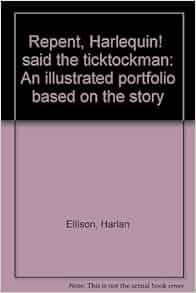

In “Repent, Harlequin!” the main hero paid with life for his trick with jelly beans, but he did influence the most important person, the Ticktockman, who got late for three minutes. Also, they are almost invincible, and it’s a great surprise or luck that the protagonists actually reached their enemies. Negative characters in stories have a lot in common as well: they murder those who do not agree with them. It is worth mentioning that in both stories main characters are using technology as a weapon against evil. In “Burning Chrome” we have two main characters - Automatic Jack and Bobby Quine also acting against the law but in a completely different way: they are hacking a criminal network. I would like to draw attention to the main characters of the stories analyzed: In “Repent, Harlequin!” there is only one main her – Harlequin who is against the regime and doing all possible to sabotage or change it. In “Burning Chrome” we see the technologies are a common thing and are used by everyone. Here we can see that technology is a way of manipulation of people, to make them a part of the machine that is functioning perfectly well and cannot make a mistake. If a person is late too often, he can be “turned off”.

Ellison mentions: “In accordance with Statute 555-7-SGH-999 governing the revocation of time per capita, all cardioplates will be keyed to the individual holder and What they had done, was devise a method of curtailing the amount of life a person could have” (Ellison 372). It is worth saying that in both stories technical progress is taking place, however, this idea is implemented in different ways.

Since the texts were written at 1960-1980s, the future reflected is actually our present that makes the reading and interpretation even more interesting and breathtaking. The stories were completed in different genres: science fiction and cyberpunk but both showing the authors’ vision of the future. As it is not possible to analyze the texts properly without immediate contrast, I decided to provide the differences in line. I would like to mention the similarities that appeared to be rather valuable for analysis. Also, at the first sight, the stories look completely different and incomparable, however, looking deeper, it is possible to find common details. It is interesting to discuss the similarities of the texts to understand more deeply the idea that authors encoded for future generations. The stories are playing a special part in the history of American literature. As a beginning, it’s important to say that both stories “’Repent, Harlequin!’ Said the Ticktockman” by Harlan Ellison and "Burning Chrome" by William Gibson are real masterpieces, and each of them contains some special information encoded between the lines.


 0 kommentar(er)
0 kommentar(er)
